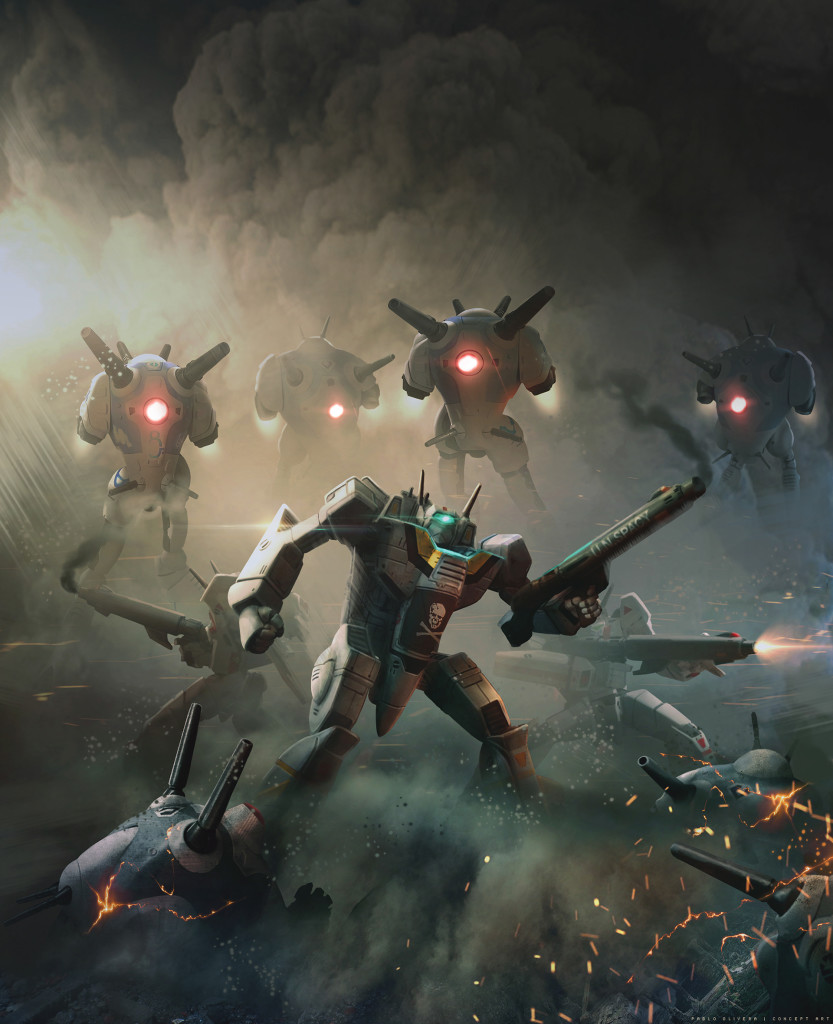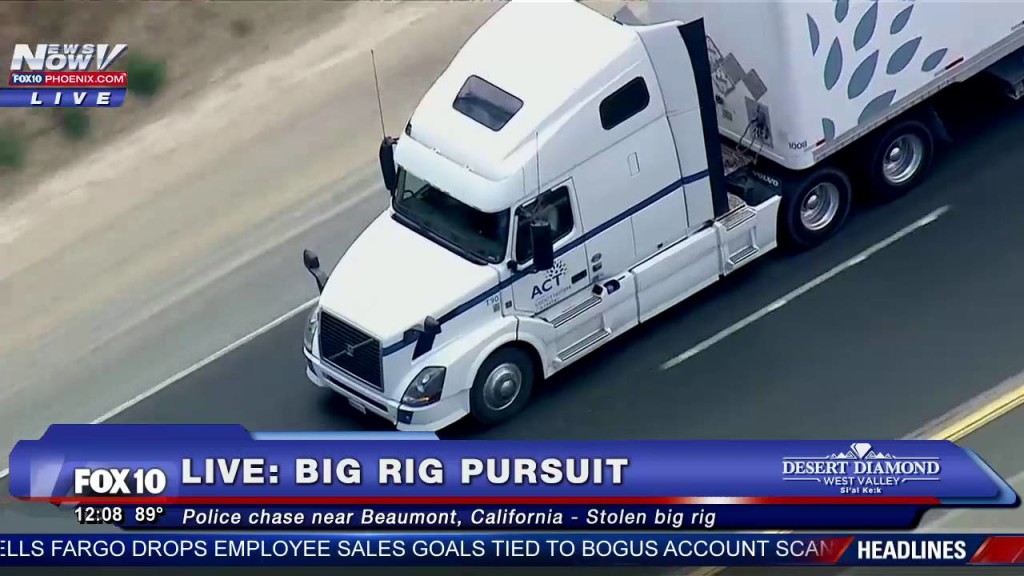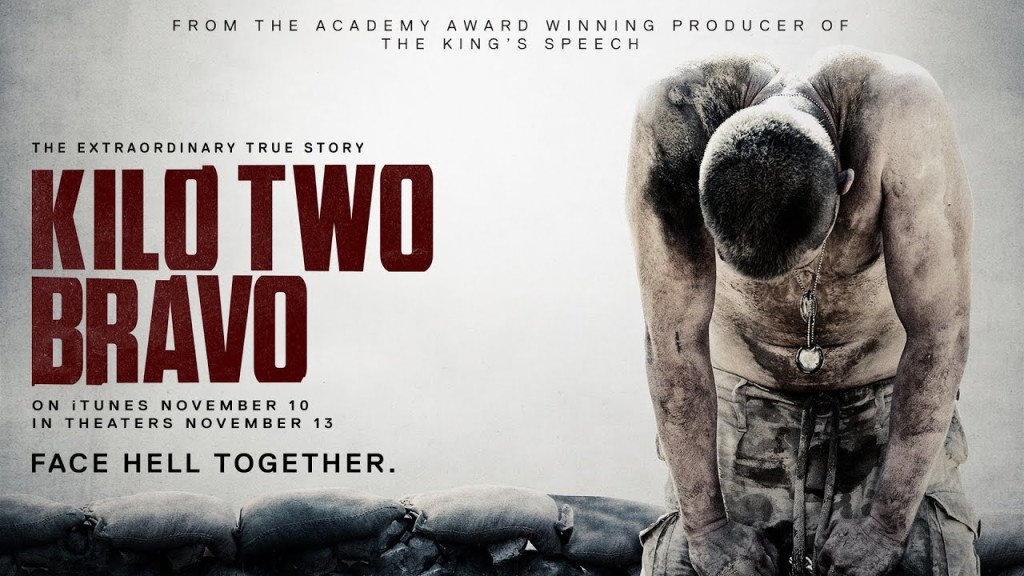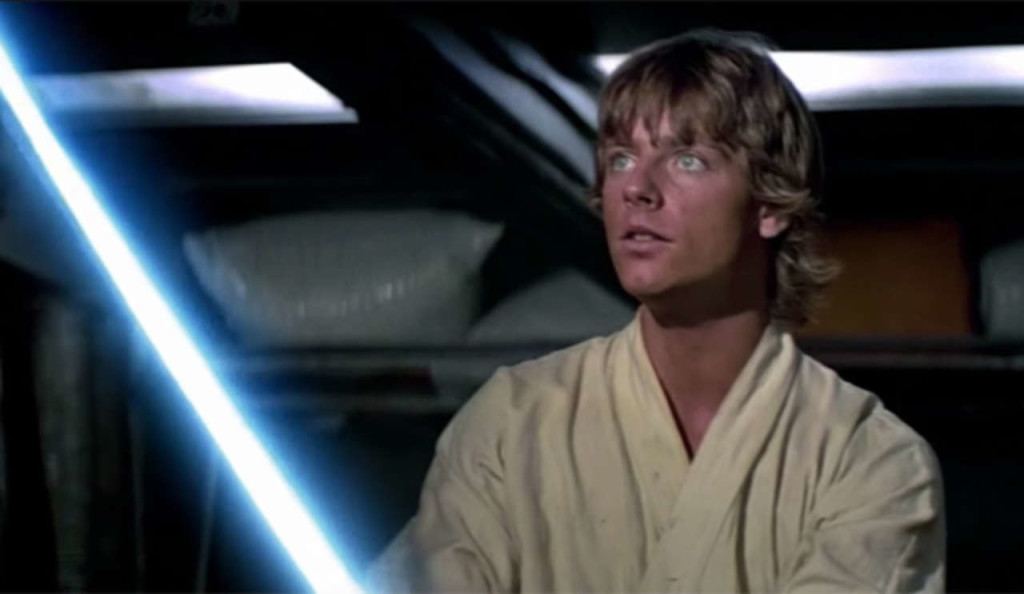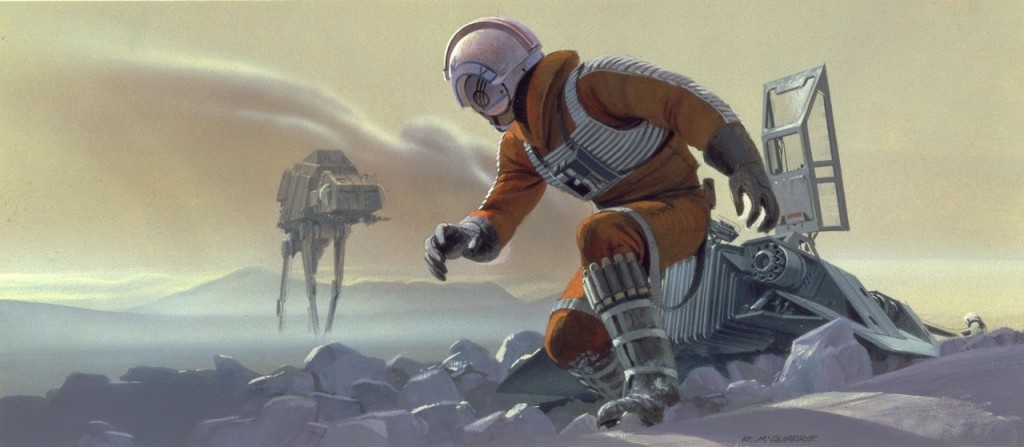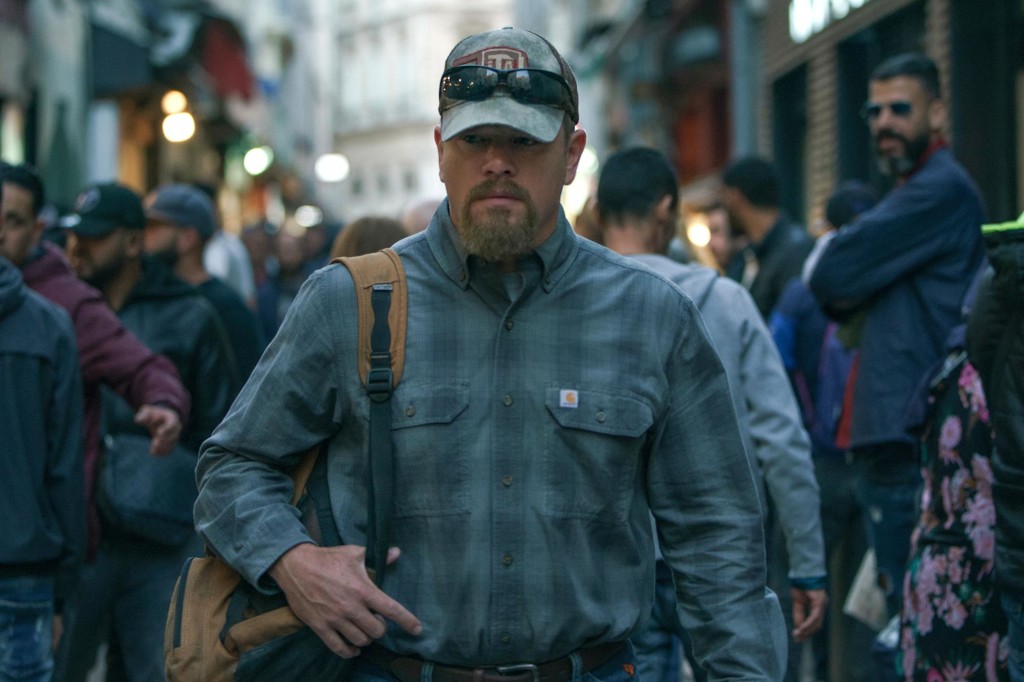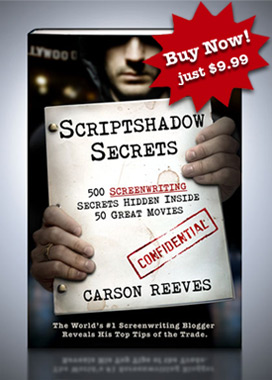Genre: Horror – Social
Premise: Aisha is an undocumented nanny caring for a privileged child. As she prepares for the arrival of her only son, who she left behind in her native country, a violent supernatural presence invades her reality, jeopardizing the American Dream she’s carefully pieced together.
About: This script finished with 9 votes on last year’s Black List. Nikyatu Jusu has made her name on writing and directing a lot of short films. This will be her first feature as a writer-director.
Writer: Nikyatu Jusu
Details: 104 pages
“Nanny” seems to be the exact type of script Hollywood is looking for at the moment – a horror script laced with social commentary. But is this the next Get Out? Or just a deep character drama masquerading as a horror film? Let’s find out!
26 year old Aisha, a Senegalese nanny, comes to New York to work for a rich family. Aisha has a plan in place. Back in Senegal, she has a little boy, Kofi. This job should allow her to save up enough money to bring her son to live in America.
Amy is the mother Aisha works for. And her five year old daughter, Chloe, immediately falls in love with Aisha. While at first, everything seems great, Aisha starts to notice some cracks in the affluent family. Adam, the husband, is always gone. And because of this, Amy has developed a serious drinking problem.
But shit really hits the fan when Amy starts shorting Aisha on her paychecks. 20 dollars here, 40 dollars there. Then Aisha starts doing overnights that she doesn’t get paid for at all. Aisha tries nicely to bring this up Amy, who’s always apologetic, pooling together any cash she can find around the apartment and throwing it at Aisha. But she’s still always short.
Aisha eventually starts dating the doorman, a studly African guy named Malik, who Aisha bonds with over being single parents. Then Aisha meets Malik’s grandmother, who’s a psychic. Aisha confides in her that she’s been having these nightmares about an evil mermaid woman. The grandmother gives her the typical spiel about how when the spirit wants something, you have to find out what it is, or whatever.
Finally, we begin to think something odd is going on with Aisha’s son, Kofi. Whenever she Facetimes with him, his picture freezes up. And while all of Aisha’s friends seem to know about Kofi, he’s always spoken of generally. Does Kofi even exist? Has he been taken by the Mermaid Spirit? These are the questions we are left with as we head into the final stretch of “Nanny.”
I’m going to add a new genre to the cinema lexicon.
Fake-Horror.
Fake-Horror is a script or film that promotes itself as a horror film despite the fact that there’s no actual horror in it.
Two of the most disappointing horror components are ‘bad dreams’ and ‘scary mirror moments.’ Any horror thing that happens in a dream is not actual horror because there’s no physical threat. You’re not actually in danger, which is a key component to why horror is effective. Nor is using a mirror to show a scary image that’s more about the SYMBOL of the image rather than the actual monster/ghost/being. Again, if it’s not a physical threat, it’s not real horror.
It’s the movie equivalent of blue balls.
“Oh look! I’m going to give you horror. I’m going to give you horror! Ah ha, nope, enjoy a character driven drama.”
Let me tell you why doing this is so detrimental to the script. Because “Nanny” actually has some good stuff in it. The interplay between Aisha and the family she works for is really well done. The mother is drunk all the time. Underpaying her. Aisha’s having to use her own money to feed Chole. And then you have this scumbag dad who’s looking for all these opportunities to make a move on Aisha.
Watching Aisha try to navigate all that is fun.
But none of it matters because all I kept thinking was, “When is the horror going to show up?” Not psychological horror. REAL HORROR. Shit that puts the character in danger. If you promise something with your premise and don’t deliver, people are going to leave upset EVEN IF your movie is good. Because nobody likes to be lied to.
And critics don’t help. Critics love these movies for some reason. I think because they get off on the symbolism. But audiences hate them. It reminds me a lot of that movie on Netflix called “His House.” It was the exact same thing as this. The horror was all symbols and nonsense. And it got 100% on Rotten Tomatoes, which should tell you right there how worthless their scoring system is. But go over to IMDB and audiences gave the movie a 6.5.
I think this gets to a deeper issue with me that I’m admittedly sensitive about. Which is people writing for critics and awards rather than who they should be writing for, which is audiences. Horror is supposed to be that one genre you can depend on having fun with.
Now you may say that this is what the industry wants right now – social commentary horror. Which is fine. But when it comes to horror films, you can never write a horror movie where the horror is secondary to the message. Horror doesn’t work that way. People come to horror movies to be scared. Get Out showed us the template for how to do that right.
And again, the reason it’s so frustrating is because I want to celebrate this script. It does some things well. Normally in these character driven movies, GSU is thrown out the window. But Aisha has a goal – a very powerful one: she’s trying to save up money to bring her son here. How much bigger of a goal can you ask for?
The writer, Jusu, also throws a lot of obstacles at that goal to keep things interesting. For example, Amy is always short with her payments. This puts Aisha in a precarious position. She needs this job which means she can’t rock the boat. Yet, she needs every cent of her paycheck to get her son here. Imagine a Senegalese nanny having to stand up to her rich employers to tell them enough is enough. They need to start paying her what they owe her.
And I liked how Jusu played with the execution of that storyline. It wasn’t just a black and white solution. Aisha has to go to the father because he’s more willing to give Aisha the money. But then he’s telling Aisha she can’t tell Amy about this. And then he kisses Aisha one night. And, obviously, she has to keep that secret from Amy now, while not getting too angry with the dad, lest he stop paying her, because then NEITHER parent will be paying her. So it all gets rather intricate and interesting.
But, in the end, I didn’t care. I was so mad that the horror never showed up. And what little did show up was weird and confusing. Aisha is being haunted by a mermaid monster?? Only in the vaguest most symbolic of symbolic pretentious college English classes would someone be able to make sense of this choice.
Why are we having mermaid spirits in a movie about a New York nanny??????
Ugh. This was so frustrating. This had the potential to be really good. That’s why I’m mad.
[ ] What the hell did I just read?
[x] wasn’t for me
[ ] worth the read
[ ] impressive
[ ] genius
What I learned: Refrain from overwriting imagery in your scripts. “At the foot of one doorway, shards of light refract like luminescent knives off a pool of blood.” I don’t even know what this means. I see lines like this all the time in scripts, usually on the first page. Stop trying to impress readers. Just give us clear imagery.
What I learned 2: The more vague and symbolic your horror monster is, the less effective he will be as an antagonistic force.
Genre: Science Fiction
Premise: Two decades after three strange abandoned alien city-ships crash into earth, a mysterious secondary enemy attacks our planet, forcing us to protect ourselves with the crashed vessels’ unique alien tech (robotech).
About: Sony has the rights to make a Robotech movie. At one point, Andy Muschietti (“It”) was tasked to direct. The project is currently stalled but it’s a property Sony likes a lot so it should get made at some point. This draft was written by S. Craig Zahler, who currently holds the number 3 slot on my Top 25 with his western, The Brigands of Rattleborge.
Writer: S. Craig Zahler (based on characters/concepts by Shoji Kawamori)
Details: 145 pages
I know we still have to finish up Comedy Showdown, but I’d be lying if I said I wasn’t stoked for Sci-Fi Showdown!!! And when this script showed up in my Inbox, well, I couldn’t help myself.
Man, I loooooovvvvvvvved Robotech as a kid. I must have asked my parents a thousand times for the Robotech robot and got flat out denied each time. Instead they got me books. Wooopdeee doo. “Hey Baby Scriptshadow. I know you wanted that really cool robot that all of your friends would be jealous of but here’s a copy of Catcher in the Rye!”
Maybe this script will provide me with the joy I never received as a child.
One day, out of nowhere, three giant empty alien city-ships crash into our planet. One in Iceland, one in the Himalayas, and one off the coast of North Carolina. The ones in Iceland and the Himalayas explode on impact. But the one off the coast of North Carolina, while heavily damaged, manages to survive, resting out in the ocean.
Twenty years later, a global commission has sent a healthy group of individuals to live on the ship. Half of these people are mechanics, tasked with fixing everything up. The other half are military, there to study the unique vehicles in the city, which consist mostly of transformable airplane/robots called “Veritechs.”
Our main character is a mechanic named Hunter. He was recruited to come to the city by his military brother, Roy. The two just lost their father recently, and Roy is pissed that Hunter abandoned both of them. So let’s just say there’s a healthy dose of conflict in the family.
About 60 pages into the script, earth is attacked by an alien entity that’s been hiding out on the dark side of the moon. How long they’ve been there is anyone’s guess. But one thing is clear – they mean business. They start blowing up cities left and right. Hunter, who was once a pilot, ignores protocol and jumps into one of the Veritechs to fight off the aliens, which are known as Zentraedi.
The leaders of the planet do a little recon and discover the aliens’ plan. They’ve built giant thrusters into the moon so they can fly the moon away from earth, which will destroy all the tides. The oceans will wipe out all of life. Then, once humanity is gone, the Zentraedi will fly the moon back, re-establishing the tides, then take over earth for themselves.
What we eventually learn is that the Zentraedi were fighting some other mysterious alien race halfway across the galaxy. This race sent us these giant cities because they knew the Zentraedi were coming to wipe us out. Sort of like an intergalactic Amazon order. “Can you please send me one giant alien city with a couple of hundred transforming jet robots so I can protect my planet? Thank you. Wait, what are you talking about it’s not Prime. It’s not going to be here until next week??? Awww, come onnnn!”
What follows is a worldwide battle if there ever was one. We jump to the Arctic, we jump to Beijing, we jump to Taiwan. Hunter, not unlike Will Smith in Independence Day, becomes the best Veritech fighter. But will he be enough to take out an entire invading alien species? I guess we’ll find out!
I have a secret to share with you.
Even though I tell screenwriters never to write these large scale sci-fi screenplays (because they’re big and unwieldy and hard to manage), I LOVE the idea of large scale sci-fi. That’s what got me into this whole movie thing in the first place. Star Wars.
But I don’t think, since Star Wars, that I’ve read a single large scale sci-fi screenplay that’s worked.
The reasons are varied. The feature film format rewards tight timeframes and contained locations. Large scale sci-fi is the opposite of that. Then there’s the issue of creating a new universe out of whole cloth. In almost every iteration I’ve read of a screenwriter trying to do this, it ends up being a cheap copy of a movie that’s already been made.
I’d never tell you large scale sci-fi is impossible. But it’s whatever percentage it is that comes right before impossible.
However, if there’s any writer who’s got a shot at succeeding, it would be Zahler. I saw him create a universe out of whole cloth with The Brigands of Rattleborge. Granted that took place in the Old West. But it still exhibited the type of imagination required to tackle giant world-building.
Which is why I was so excited to read this script.
As is the the case with all of Zahler’s scripts, he takes his sweet time setting up the story. But unlike Brigands, which was clearly building towards a great sequence (the invasion during the storm), the buildup here is more expository in nature. Sure, seeing giant ship cities crash into earth is fun. But spending the next 50 pages setting up 20 different characters and the rules of the alien tech and what we’ve done since they’ve arrived got tiresome.
I supposed if you’re REALLY into the details of this mythology, it might be enough. But it reminded me a lot of Matrix Reloaded. Theoretically, going down into this underground city (Zion) and seeing how it operates should be interesting. But I, along with everyone else who watched that movie, was bored to death. We were ready to move forward a lot sooner than the directors were.
I get it. It’s hard to figure out with sci-fi what needs to be included and what should be relegated to backstory. But one of the most important ingredients in any screenplay is MOMENTUM. Once you lose that, it’s hard to get it back. And a lot of the momentum was lost in the section of this screenplay after the ship-cities crashed and before the aliens attacked.
Let’s talk for a second about what you can do to prevent something like this. Because, sometimes, you do need time to set your story up, especially if it’s a story like Robotech with all these moving parts.
Here are a couple tips. One, get rid of anything that you don’t absolutely need. Sure, spending several scenes setting up your Fifth Biggest Character helps us know that character better. But is knowing the 5th biggest character that well worth sacrificing momentum? You can usually cut out more than you think you can. So you should always err on the side of cutting.
Two, use ‘dramatic questions’ to keep “slow” sections interesting. A dramatic question is something you pose in a scene or a sequence of scenes that demands the reader keep reading to get an answer. The idea is, the reader’s more likely to stick around if he doesn’t yet have an answer to something.
And since not every scene in a movie can be juiced up with nuclear level GSU, a ‘dramatic question’ is a nice backup plan. In A Quiet Place 2, the characters get to safety early on in the screenplay when they reach a neighbor’s hideout. The script could’ve easily, then, gone into basic ‘information mode’ of “here’s how this guy lives. Here’s what all of the characters are now going to do moving forward.” But the sequence had this nice dramatic question of, “Who is this guy?” Is he good? Is he dangerous?” That added a little pep to a section that could’ve been stale.
That’s all dramatic questions are – they provide an extra layer of intrigue playing underneath the story for sections that are taking a GSU breather.
Robotech is okay. It’s one of those scripts that’s going to look so much better onscreen than it does on the page. Still, it was too information-heavy for me and needed more than those two modes – all-out exposition and all-out action. For that reason, it wasn’t quite worth the read.
Screenplay link: Robotech
[ ] What the hell did I just read?
[x] wasn’t for me
[ ] worth the read
[ ] impressive
[ ] genius
What I learned: Dramatic questions are only as effective as how interesting the question is. Let’s go back to that Quiet Place 2 example. The question of, is Cillian Murphy’s character dangerous(?) has major implications. If he’s a killer, they’re all in a lot of trouble. If the dramatic question had instead been, “Will they find food for the night?” I mean, sure, there’s some dramatic value to that question. But since they’re not going to starve if they miss one meal, the dramatic value is, overall, pretty low. So don’t just add dramatic questions. Make sure they’re compelling dramatic questions!
Lots to talk about on this Mish-Mash Monday!
First and foremost, Comedy Showdown scripts are due A WEEK FROM THURSDAY! I will be accepting entries all the way up until 8pm Pacific Time.
What: Comedy Showdown
Genre: Comedy
When: Entries due Thursday, June 17, by 8 p.m. Pacific Time
How: Include title, genre, logline, why you think we should read it, and a PDF of your script.
Where: Send submissions to carsonreeves3@gmail.com
At this point, your second draft should be finished. The only thing you should be doing during these last two weeks is POLISHING. Cleaning up scenes. Grammar spell-check stuff. Adding jokes to scenes to make them funnier is fine.
But you shouldn’t be doing major surgery on your script with two weeks to go. You shouldn’t be reinventing characters. You shouldn’t be replacing entire sections. Rewriting entire third acts. I mean, you CAN do all of these things if you want. But in my experience, doing so with so little time to confirm that they’re working leads to…. undesirable results, let’s just say.
Really hoping to find the next great script here so I’m rooting for you guys!
Speaking of great scripts, let’s talk Kinetic!
A few of you noticed the Deadline story about my producing partner, Eric Pacquette at Meridian Pictures, and how “Kinetic” was announced as part of his slate.
So here’s what’s going on. When Eric was working at Sony, he was always following Scriptshadow. I have to double-check with Eric about this but I think he’s hired three writers he’s found specifically from Amateur Showdown Scriptshadow posts.
So when Eric recently moved on from Sony to start his own production company, we talked about working on something together. That conversation happened right as I was finishing up The Last Great Screenplay Contest. So it was serendipitous in a way. Eric read Kinetic, loved it, and said, “Let’s f#$&ing make this movie!”
After my desperate failed attempt to get Gerry Butler attached (by the way, I still think there’s a chance Gerry’s going to be in this film – you just watch – I will use “The Secret” to will it into existence), Eric suggested we focus on getting a director. He brought Paul Katis to my attention via a movie Paul made called Kilo Two Bravo. It’s about a group of soldiers in Afghanistan who get trapped inside a mine field. It’s a really intense movie and I highly encourage anyone who hasn’t seen it to check it out!
But it’s when I met Paul that I knew he was right for Kinetic. Not only was he very astute about the script – he had a lot of good ideas on how to make it better. But it was his obsession with getting the characters right that impressed me. It’s rarer than you think to meet a director who really cares about the screenplay. And it was clear through talking to Paul that he wants this screenplay to be great.
So Paul suggested we do a couple things. One, amp up the action. Chris Dennis was thrilled about this. The only reason the action was muted in the contest draft was to keep the movie affordable. The other suggestion was to move away from some tropes and be a little more unexpected, specifically with the villain, who we totally changed.
Now when we originally talked about these changes, I thought Chris was going to come back with a script with a few changed scenes here, a few changed scenes there. Nope! We all received the rewrite Friday and Chris had done, virtually, a page 1 rewrite! Chris confided in me that the contest draft was a first draft (which is still shocking to me). This draft, he went all out. I mean this draft is fucking insane, lol. It’s like he took everything that was good and made it even better.
As a producer, one of the most terrifying things you face is receiving a new draft. Cause you don’t know what you’re going to get. Is it going to be great or is it going to be a misfire? Chris not only blew me away, but he did it in a month and a half! With a page 1 rewrite. Insane.
This movie is now Taken meets Breaking Bad with several 2021 twists.
We’re all going to jump on Zoom tomorrow and discuss the next steps. The preliminary plan is to get an actor attached so we have a full package, and then pitching it to all the big folks. I’ll keep you updated on what happens, of course.
Oh, and by the way, Eric has his ear to the ground and everyone wants a great comedy. All the more reason to enter Comedy Showdown! You could be the next project on the Scriptshadow Productions – Meridian Pictures slate!
Speaking of producing, I checked out Zack Snyder’s Army of the Dead “film school” documentary on Netflix and now I feel guilty. I spent my entire review of Army of the Dead shitting on the movie. And then you see what it actually takes to make a film??? The sheer amount of money and manpower and coordination required to create a movie makes you realize that any movie you see onscreen is a minor miracle.
The doc details how they created their post-apocalyptic Las Vegas. First of all, they shipped in hundreds of tons of rubble. Where do you get rubble? Where does one buy rubble? Cause I’m pretty sure you can’t get it at 7-11 (“Uh, yes, hi. Sorry to bother you. I can’t find your rubble isle. Is that next to the candy bar section or…?”). Yet movie people are responsible for finding hundreds of tons of something that there is no phone book listing for.
Then they used the thermal imaging photographic cameras responsible for finding hidden pyramids in Mayan jungles to take a three-dimensional picture of Las Vegas so that they could map out every little inch of the city, which they would then put into a computer to create a video-accurate Las Vegas. I mean where do you even begin to come up with that idea?
I’m watching more “making-of” stuff lately to re-familiarize myself with the movie-making side of the industry. I’ve spent the last decade focusing on the script side, obviously. But, believe it or not, before I got into screenwriting, I wanted to be a director. I went to a year of film school. I used to watch every documentary I could find on filmmaking. I read all the big books. I would only rent movies that had director’s commentaries on them. And as soon as I would finish a movie I would go right back to the start and watch it again with the commentary. I must’ve done that for 750 movies at least.
But filmmaking has changed a lot since then and there’s all these new things to learn. I’m fascinated with the Stagecraft technology they use for The Mandalorian (although I still don’t think it looks realistic enough). I just learned about “stitching” in that John Krasinski breakdown of his Quiet Place 2 scene on Vanity Fair.
Still, in the end, it comes down to pointing a camera at actors and having them believably act out the script you’ve written so I figure as long as we get that right, all the other stuff is gravy. (Although I’m not sure how that advice applies to a 30 ton semi truck riding up the shoulder of the Phoenix 17 freeway during rush-hour, banging into the sides of 45 consecutive cars in a row but I’m sure I’ll figure it out).
If you guys know of any recent great filmmaking docs (within the last five years), send them my way. I’m eating them up.
But yeah, for the first time in forever, I can glimpse the finish line of something I’m working on. I can see Kinetic getting made. It still has some hurdles to clear but they’re achievable. Fingers crossed!
It’s taken 45 years to do, but Scriptshadow has finally decoded the secret to Star Wars’s success. And now you can use this secret in your own screenplays!
It’s been a while since I’ve posted about Star Wars, mainly because there hasn’t been a lot of Star Wars to talk about. The Lucasfilm team seems perfectly okay with hiding out on Dagobah for the time being, tired of the Twitterverse questioning every move they make. As they reboot, they’d be wise to read this article, as I believe it holds the key to making Star Wars great again. Or any movie for that matter.
And really, it comes down to one of the most basic concepts in storytelling…
THE ACTIVE CHARACTER
One of the things you hear me talk about all the time on this site is ACTIVE CHARACTERS. An active character is someone who PUSHES FORWARD to achieve a goal. The reason active characters are so important to movies is because when a character is pushing forward THEY ARE TAKING THE PLOT ALONG WITH THEM. You can’t go after Thanos without bringing the entire plot of the movie along for the ride.
That’s why active characters are so valuable. Their actions write the movie for you. The second you switch to reactive or, worse, passive characters, you’ll notice your plot begin to stall. This is why you hear me rail against “waiting around” narratives. If your story is about, say, a couple of friends in a small town who are just trying to survive the boredom of summer, you’re dealing with two passive characters. And since they aren’t going anywhere, neither is your plot.
The use of active characters should extend beyond your hero, though. Ideally, you would like your villain to be active as well. The idea is that on one side you have your hero, who’s actively pursuing his goal. On the other side, you have your villain, who’s actively pursuing his goal. Then you construct the story in such a way that these two goals collide. That’s what causes all the conflict in the movie, is the constant intersection of those goals.
This is why Die Hard remains, to this day, one of the greatest movies ever. On the one hand you have John McClane, who’s trying to save his wife (his active goal). On the other, you have Hans, who’s trying to steal a bunch of money (his active goal). And those two goals collide. John cannot achieve his goal without interrupting Hans’s pursuit. And Hans cannot achieve his goal as long as John keeps getting in the way. Where those goals collide is the playground through which you explore your story.
But you can go one step further! What if it isn’t just your hero who has a goal and your villain who has a goal… but your main supporting character who also has a goal? What if you made him active as well?! This is where you start to see seasoned screenwriters pull away from the amateur crowd. Most amateurs are able to apply everything I’ve talked about so far. However, that’s where they stop. They make sure the hero is after something, the villain is after something, and they’re done.
Working screenwriters understand that the more active characters there are in your movie, the more opportunity there is for ACTIVITY. For PLOT. For CONFLICT. For ENTERTAINMENT. There’s more ON THE LINE. The idea is, the more people you have pushing on your story (active characters create “push”), the more energy your story is going to have.
Which leads us back to the original Star Wars, which I realized the other day may have the most active set of characters in movie history!
Check it out.
To start things off, we have R2-D2. He’s our original ACTIVE HERO in Star Wars. He has the Death Star plans that he must deliver to Alderran. R2-D2 is determined to secure an escape pod and shoot down to the planet of Tatooine NOW.
Following immediately behind R2-D2 is Darth Vader, our villain, and arguably the character in Star Wars with the strongest goal. He has to retrieve those Death Star plans before they make it into the hands of the Rebellion or else the Empire is doomed.
Our next active character is Obi-Wan. When he receives Princess Leia’s message, he becomes the primary active character in the script. He must deliver R2-D2’s Death Star plans to Alderaan. So now he’s squarely on the active train.
Of course, not far behind is Luke. Remember, Luke isn’t active at first. He’s stuck on the farm, unable to leave. But when his aunt and uncle are killed, Luke is all about helping Obi-Wan. From that point on, he becomes an extremely active character.
Next up we have Han Solo. Han could’ve easily been constructed as a passive pilot – a character merely meant to transfer Obi-Wan and Luke from Point A to Point B. But what fun would that be? Instead, Lucas gives Han his own goal. He owes Jabba the Hut a ton of money. Obi-Wan is giving him some of the money now and the rest after they achieve their mission. So it is extremely important that Han succeed. Now HE’S a super-active character.
Finally, you have Princess Leia. Princess Leia was technically an active character before anyone, since she’s the one who initiated the mission to get the Death Star plans to Alderaan, inserting them into R2-D2. But because she’s captured early by Vader, she doesn’t get a chance to display her activeness. However, the second they rescue Leia, she arguably becomes the most active character in the group, blasting open walls to create escape opportunities and making sure they get to the Rebel base in one piece.
Every single main character in Star Wars is EXTREMELY active.
I don’t think that’s an accident. I think it’s a major contributor to why the movie is one of the best of all time. Again, whenever you make a character active, you are inserting a unit of ‘forward-moving energy’ into the story. The very nature of activity is that you are attempting to push something along. So it makes sense that with every additional active character, you are adding more energy to the mix. At a certain point, if that many characters want something, your movie is this giant blinding force of energy that can’t be stopped.
Now it’s important to remember that not all activity is created equal. Someone can be active by painting their house in hopes that it will look nice when the in-laws visit for the weekend. Someone else can be active by hunting down the man that kidnapped their daughter. No matter what you do, Active Kidnapper Hunter is always going to inject more energy into the script than Active Painter Husband.
The more intense the activity, the more energy there is in the story. That’s where Star Wars separates itself from other movies. Not only are there so many active characters, but all of them want their goal so badly that they’re bringing an insane amount of energy to the picture.
Something to keep in mind here is that Star Wars is a variation of The Hero’s Journey. The Hero’s Journey is just like it sounds. It’s a character going off on a journey. I bring this up because it’s always easier to make characters active when they’re on a journey. That’s because it’s hard to physically move from Point A to Point B of a journey without some level of activity.
In other words, Star Wars has an advantage. Its story is built around an “active-friendly” premise. It encourages active characters. You might not have that opportunity if you’re writing a contained thriller. But that doesn’t mean you shouldn’t try to write active characters. In fact, I would always start out with any character you create, trying to make them active. I don’t care if it’s the hero or the 8th most important character in your script. Active characters create plot opportunities. Passive characters wipe story out. It’s hard to come up with plot ideas if your characters aren’t leading the charge.
And just to be clear, I understand that every movie is different. Empire Strikes Back’s first 20 minutes is technically a “waiting around movie.” But the reason it works is because at least one major character, Darth Vader, is actively pursuing something. He’s trying to find the secret rebel base which he will then attack. So even if you can’t create a plot where everyone is active all the time like Star Wars, make sure that as many of the major characters are actively pursuing something as you can. That’s why, instead of completely waiting around in the first act of Empire Strikes Back, they had Luke get attacked by the Wampa. That gave Han a goal (find Luke) which allowed him to be ACTIVE.
I’ll finish up by asking the question again. Is it any coincidence that the greatest movie of all time has six of the most active characters of all time in it? I don’t think so.
Carson does full screenplay consultations as well as consultations for pilots, loglines, outlines, treatments, whatever you’ve got! If you’re interested in getting a consultation, e-mail carsonreeves1@gmail.com with the subject line “Consultation.” Looking forward to working with you!
Genre: Drama/Thriller
Premise: A patriotic pipeliner from the heartland of America must go to France to prove his daughter’s innocence, as she’s in prison for the murder of her Arab lover.
About: You may have heard me talking about this one in the newsletter. It’s directed by Tom McCarthy (Spotlight) and stars Matt Damon. The movie is coming out in July.
Writers: Thomas Bidegain | Noé Debré | Marcus Hinchey (screenplay) and Tom McCarthy
Details: 122 pages
One of the obstacles you’re faced with when writing an “adult” movie is deciding how much of the Hollywood formula you want to ditch and how much you want to keep. Traditional story mechanics (a beginning, middle, end, GSU, conflict, drama, etc.) will work across all demographics.
But there is something to be said about muting commonly used components to make adult stories feel more realistic. It’s always a question of how much muting do you want to do. Because, at a certain point, you start eating into the drama. You start eating into the conflict. That’s the dilemma that today’s script faces. In its pursuit of realism, it dances with some decidedly non-dramatic choices. Let’s see how it turned out.
50 year old Bill Sedowski is a pipeliner. He’s the guy who digs into the earth and literally lays oil pipe, as American a job as someone can have. And that’s appropriate for Bill because he’s a hardcore American, the kind of guy who prays before every meal and doesn’t buy a cap unless it has the American flag on it.
So we see the fish-out-of-water contrast right away when Bill lands in Marseilles, France. It takes us a few scenes to realize why he’s here but we eventually learn his daughter, Allison, has been in prison for five years for the murder of her lover, an Arab girl named Lina. Bill heads over to the prison to see his daughter, something we realize he’s done dozens of times before. But this time she gives him a letter and says to please hand it directly to her lawyer, who isn’t talking to Allison anymore.
Bill does as told, trapping the squirrelly lawyer at the courthouse, who reads the letter (it’s in French) and tells Bill that she can’t help and that Allison needs to accept what she’s done. Nice lawyer! When Bill gets back to the hotel, he runs into a kind young woman named Virginie, who’s staying next to him, and he asks her to translate the letter for him.
It turns out that someone overheard some kids talking at a party and a dude named Mika was bragging that he killed Lina. Allison was hoping her lawyer could match his DNA against the crime scene. When Bill visits his daughter the next day, she asks, hopefully, if her lawyer accepted. Seeing the desperation in her eyes, Bill chooses to tell his daughter that the lawyer did accept. She’s going to look into it.
That now means, of course, that Bill will have to look into it. It’ll be up to him to find this Mika character. No small task considering he doesn’t even speak the language of the country. Bill finds some help in the girl who translated the letter for him, Virginie. She becomes his translator on this mission and off they go, determined to prove Allison’s innocence.
Let’s talk about some of these unconventional choices I alluded to in the introduction.
The first is coming into the story very late. In a traditional Hollywood movie, we’d show the events that led to the murder or wake up the night after the murder. From there, we’d watch the whirlwind unfold, requiring the father to fly from America and try to save his daughter.
But Stillwater starts a good FIVE YEARS into the process. That’s how long Allison has been in prison already.
I’m not sure how I feel about this. With movies, you’re always looking for situations that create a natural ticking time bomb, or at least some level of urgency. If you start the movie the day after the murder, for example, there’s a ticking time bomb in that the media and police are looking to charge Allison. That gives you a limited amount of time to prove her innocence.
By coming into the story so late, there is no urgency. She’s already in prison. Anything Bill doesn’t achieve now, he can try again in a week, a month, six months. That’s not ideal in storytelling. You want there to be an “all or nothing” component to achieving the goal. If Hero doesn’t achieve X by Y amount of time, he never gets another shot.
When movies move away from this, it’s usually because they want to “de-Hollywoodize” the storytelling so it feels more authentic. Seeing as Tom McCarthy threw all drama out the window to make Spotlight as realistic as possible, I’m not surprised he’s doing the same thing here.
The surprising thing is that, for the most part, it works. The reason for that is the characters. One of the best ways to deepen a story is to explore a broken relationship, usually within a family. But you can’t cheat. It can’t be bargain basement Tuesday backstory “Daddy didn’t hug me” stuff. It’s got to have some depth to it and some specificity, so it feels like there’s a real past here. And you need a little luck. You can do all this stuff right and for whatever reason it doesn’t work.
The part that hooked me in this relationship was when Bill was having Virginie translate the letter his daughter wrote (the letter is in French). Here is the last paragraph: “I am innocent of this crime and I have no one else to advocate for me in this situation. My mother is dead. My Grandmother can no longer make the trips to Marseille and you know my father. I would not trust him with this. He is not capable. You are my only hope.”
I mean how much more heartbreaking can you get than a daughter who doesn’t believe her father is capable of helping her? And that’s what sets up the compelling goal of the story, which is Bill trying to do the very thing that his daughter doesn’t think he can. But it isn’t just that. Bill’s not trying to prove his daughter wrong. He wants to save her. In the process, if he can, he’ll also get his daughter to believe in him again.
That’s why I wanted to stick around for this ride. I wanted to see if Bill could both save and win his daughter back. That’s when a screenplay really works, is when the reader is more invested in the character side of the goal than the plot side of the goal. In other words, you could’ve written this exact same movie but with a blander family backstory and still had that satisfying moment when the father proves his daughter’s innocence. But it works so much better when we feel the emotion of that actually mattering for the future of these characters.
In classic McCarthy fashion, he plays with storytelling fire, at one point jumping forward in the story FOUR MONTHS. When you do this, you erase all tension that you’ve built up so I highly advise against it. But the story is saved, once again, when the murder mystery returns to the script’s pole position and we learn what really happened that night. It’s quite the ending.
I don’t know if anyone under the age of 40 is going to like this movie. But the people who love to show up for those Clint Eastwood matinees are going to love it. :)
[ ] What the hell did I just read?
[ ] wasn’t for me
[xx] worth the read
[ ] impressive
[ ] genius
What I learned: This is a clever way of exploiting a well-known murder story, as this is obviously based on the Amanda Knox case. You can do this to come up with some good ideas of your own. You simply take an interesting real-life murder case (or any popular story in the news) and look for an emotional component to it and tell the story from that angle. You could have told the Amanda Knox story a number of ways. You could have told it through the point of view of Amanda. You could’ve told it through the point of view of the lawyer trying to get her off. You could’ve told the story in third person and cut back and forth between all of the main players. Today’s writers took the route of exploring what it would’ve been like to be the father of a girl accused of murder in another country. That’s what allows them to get away with, basically, stealing a well-known murder story.


